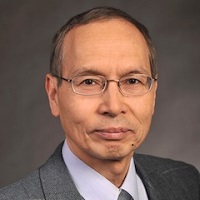Prof. Chikashi Sato, Idaho State University, USA
Biogrpahy: Professor Chikashi Sato is an environmental engineering and science educator, originally from Iwaki City, Japan, and now a U.S. citizen. For the past 29 years, he has been a faculty member at Idaho State University, where he serves as Director of the PhD program in Engineering and Applied Science and the MS program in Environmental Science and Management. Dr. Sato holds an MS in Environmental Health Engineering from the University of Kansas and a PhD in Environmental Engineering from the University of Iowa.
Dr. Sato has been recognized with several prestigious fellowships throughout his career. In 2002, he was awarded a Japan Society for the Promotion of Science (JSPS) fellowship, during which he conducted research at the Public Works Research Institute in Tsukuba, Japan. In 2012, he received a Fulbright fellowship and taught at Tribhuvan University-Prithvi Narayan Campus in Pokhara, Nepal. In 2014, he was an invited Visiting Professor at Kyoto University's Graduate School of Engineering, Research Center for Environmental Quality Management. Additionally, in 2017, Dr. Sato was honored with the Chinese Academy of Sciences President’s International Fellowship Initiative (PIFI).
Dr. Sato has made significant contributions to the field of scientific writing, publishing Handbook for Scientific English Writing in 2009, a widely-used resource in Japan. He has served on the editorial boards of various academic journals and is currently a guest editor for the special issue “Microbial Fuel Cells, 3rd Edition” in the journal Energies.
Speech Title: Integrating Microbial Fuel Cell with Hydroculture System for Nutrient Recovery from Wastewater
Abstract: This study investigates the integration of microbial fuel cells (MFCs) with hydroculture systems (MFC-Hyp) to develop a sustainable, carbon-neutral energy-water-food (EWF) supply. The system is designed to enhance nutrient (N, P, K) recovery, CO2 utilization, and wastewater treatment while generating electricity. Potato-process wastewater, containing organic carbon and nutrients, served as fuel, and garlic chives (Allium tuberosum) were used as the hydroponic plant. Results showed that nutrients diffused from the MFC to the hydroponic system, promoting plant growth, while the organic content (COD) in the wastewater was significantly reduced. This integrated system offers a promising approach for renewable energy production, nutrient recovery, and wastewater treatment, though further optimization is needed to address the low power output.
.
Contact Us
Conference Secretary: Rachel Cao
Tel.: +86-13880104217(Working Hour: GMT 10:00AM-5:00PM)
Email: aceep_conf@126.com
